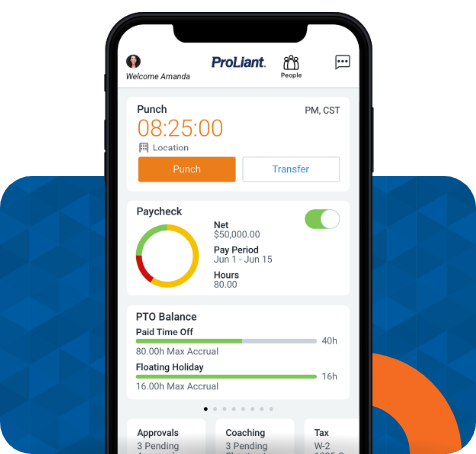As physicians, insurance companies, and legislators make efforts to address the mental health crisis in America, a lot of the responsibility for promoting employee wellness and mental health falls on employers. And while it may seem like a costly burden, the truth is that addressing mental health issues in the workplace can reduce health care costs for businesses and employees.
Here are six actions employers can take to promote mental health and wellness for their employees.
1. Implement an employee wellness program
Employee wellness programs provide support in the workplace for employees to maintain healthy lifestyles. According to the CDC, the workplace is “a key location for activities designed to improve well-being among adults. Workplace wellness programs can identify those at risk and connect them to treatment, and put in place supports to help people reduce and manage stress.”
An article from the Monthly Labor Review suggests building a workplace wellness program around 4 leadership principles:
- The first leadership principle suggests that for employees to be engaged at work, they need to be healthy, including being free of undue job demands and stressors. “At its core, well-being includes good physical and mental health, strong interpersonal relationships, financial stability, and a meaningful life with positive experiences at work.”
- The second principle advocates creating workplace environments that support employee engagement in health behaviors, linking good health and business success. This principle promotes the idea that organizations “benefit from corporate wellness programs through reductions in employee absenteeism, lower healthcare and worker compensation costs, and enhanced productivity.”
- The third leadership principle addresses prevention-focused health education. This principle emphasizes health education aimed at “improving employee literacy in areas such as reducing stress, addressing various health conditions, improving diversity skills and safe driving skills, and dealing with workplace bullying.”
- The fourth leadership principle encourages rewards for healthy employee behaviors, including financial incentives such as gift cards, gift certificates, gym memberships, and other initiatives that offer support for health risk assessments and counseling.
Even with these principles in mind, every employee wellness program will look different. SHRM offers a certificate program that empowers HR professionals to support employee emotional wellness so that they are better positioned to help craft programs that will improve wellbeing throughout their organizations.
2. Update benefit offerings to address mental health
Many organizations will benefit from adding more features to existing benefits or offering new benefits for 2023. For example, SHRM suggests employers “enhance mental health benefits by expanding services offered through employee assistance programs and adding virtual behavioral health care options.”
Also, a significant barrier for many people regarding mental health is finding the right provider. Add-on benefits might include mental health scheduling support that provides resources to help employees find and schedule mental health services.
Employers and HR teams should ensure that employees know how to find information about what is covered by their insurance by providing instructions on where they can find coverage details in their plans.
3. Promote wellness communication
Many organizations have decided to address company culture in ways that foster a greater understanding of mental health concerns through better communication and education. A survey conducted by Fisher Phillips, a national labor and employment firm, found that “36% of employers are encouraging deeper connections between leaders and their teams.” The hope is that stronger bonds will develop to ease mental health worries and create channels for accommodation requests. The survey also found that another 33% use team-building exercises to create stronger relationships and boost engagement.
Here are a few communication principles from WebMD that can help encourage wellness communication and build stronger teams:
- Listen to employees to determine the best way to communicate with them. Do they prefer email, town halls, or intranet sites for information? Or do they prefer to hear directly from their managers?
- Consider creating a podcast to serve up wellness information to your teams.
- Ask if remote workers want their families to be included in well-being conversations.
- Don’t use corporate speak or jargon - be real with your employees when talking about workplace wellness.
- Ensure that your communications are purposeful. WebMD suggests covering what you hope your staff will get out of the wellness program, including specific actions you would like them to take.
- Include a call to action up front and let them know how the program will benefit them.
- Consider utilizing existing channels for communication and include direct links to program offerings so employees can act right away if they see something that interests them.
4. Provide financial well-being programs
Many people feel unsure when it comes to making benefits decisions, especially when it comes to health insurance, and often employers and employees end up paying too much. Financial well-being programs provide guidance from certified professionals to help employees factor in benefits decisions in their financial planning. Financial and benefit education programs also help employees address the stress of making these decisions and provide information on managing finances during inflation.
5 Offer reasonable accommodations to help with employee wellness
Reasonable accommodations are inexpensive fixes employers can implement to help with various mental health concerns. According to a survey from Fisher Phillips, “43% of employers have seen an increase in mental health reasonable accommodation requests since the pandemic started.”
Remote/Hybrid Work Schedules
One type of accommodation that has seen a boost in popularity is flexible work schedules, including hybrid and remote work schedules, which are often used to help those suffering from anxiety and depression. In fact, around 25% of employers claim that they have received a work-from-home request on the basis of anxiety or another mental issue in the past two years.
Managers are encouraged to be flexible when it comes to their employees’ personal lives and sensitive when things arise. Some employees will benefit from fully remote work, while others will do better with a hybrid schedule. Managers should approach hybrid and remote as two separate workflows and carefully assess infrastructure, culture, team dynamics, and individual roles.
Emotional Support Animals and Service Animals
Emotional support animals as accommodation can be controversial when discussing mental health in the workplace. And it’s important to note that there are significant differences between emotional support animals and psychiatric service animals.
Emotional Support Animals
- can be any animal
- assist through its presence alone
- only place legally required to welcome an emotional support animal is on an airplane
Service Animals
- restricted to dogs and miniature horses under federal law
- animals trained to perform specific tasks for disabled individuals
- protected under the Americans with Disabilities Act (ADA)
- can legally go anywhere their owners go
Even though employers are not required to allow emotional support animals in the workplace, it still may be a worthwhile accommodation to offer employees if possible. It is important to assess employee response to the idea and to consider the possibility that some people in the workplace could be allergic to certain animals.
6. Implement mandatory mental health days
Some employers have had a lot of success mandating the use of mental health days apart from PTO, providing incentives when employees use their mental health days. According to SHRM, some employers have experimented with additional paid time off to incentivize employees to use their mandatory mental health days as prescribed.
HubSpot, for example, has committed to battling burnout by implementing a Global Week of Rest, No Internal Meeting Fridays, and more mental health programming. LinkedIn, Bumble, Hootsuite, Mozilla, and others also gave employees an extra week off in the summer to combat burnout and give employees a much-needed break.
Proliant Benefit Administration Solution Streamlines the Open Enrollment Process
Proliant is here to streamline your processes with our benefits administration solution. Our solution ensures employees stay confident and well-informed while making their benefit enrollment decisions. Here are just a few features of our benefits administration solution:
- Securely send enrollment data to multiple insurance carriers
- Eliminate risks associated with regulatory mandates
- View benefit overviews side-by-side to help employees pick the plan that’s best for them.
If you would like to know more about Proliant’s benefits administration solution, contact us today to request a meeting with one of our benefits administration experts.







No Comments Yet
Let us know what you think